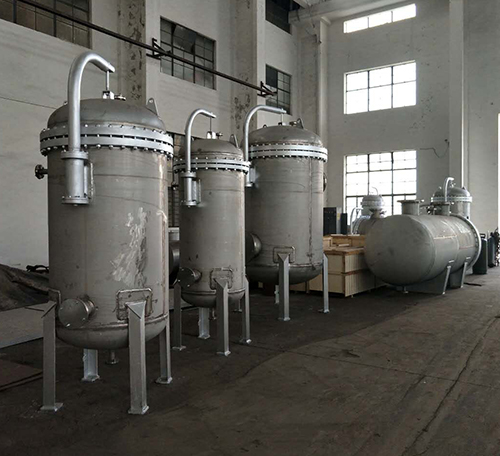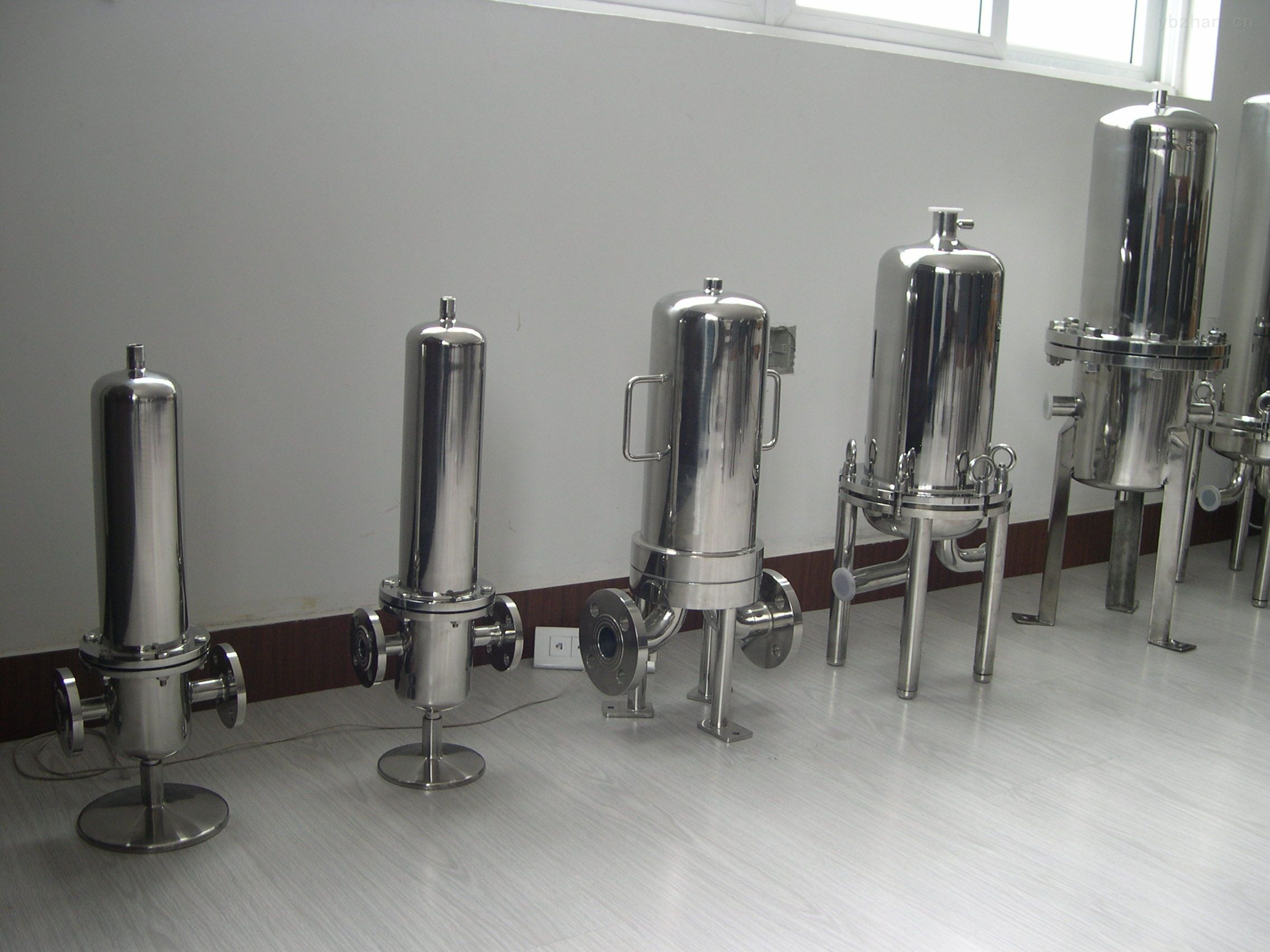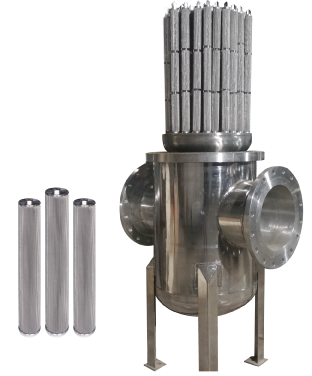At present, the gold mining industry sector still lacks in-depth research on gold- cobalt - arsenic concentrates. The authors studied the results of the pyrometallurgical process for the treatment of gold-cobalt-arsenic flotation concentrates. The process includes: two-stage calcination of the flotation concentrate (the first stage-decomposition roasting, the second stage-sulfation roasting), and the slag after the sulphation roasting is subjected to leaching and cyanidation of the leaching residue. The results of the study prove that the recovery of arsenic during the decomposition roasting process depends on the temperature, the sublimation time and the discharge value in the system. The optimum conditions for decomposition and calcination were determined as follows: the temperature in the sublimator was 760-780 ° C; the calcination time was 2 hours, and the negative pressure in the system was 0.1 × 10 5 Pa. The air consumed by arsenic vapor oxidation is 3 to 4 liters / minute. Note: The content of the raw calcined residue in the decomposition roasting is: 21.98S total; Sso4 is not; 3.67As; the slag yield is 64.8%. The amount of sodium sulfate added was 10% by weight of the slag. * The temperature of the I stage roasting is 450~500 °C; The data in Table 2 shows that the recovery of precious metals is low when the original concentrate and its various products are cyanidated. The reason is that the fine-grained dispersion gold in the slag of the oxidative roasting and the sulphation roasting, and the leaching slag of the sulphated roasting slag is present in the hematite granules in a very fine color, so that the gold granules are difficult to cyanide. The solution is in contact. When the decomposition calcination is carried out, the fine particle-dispersed gold is in the particles of the pyrrhotite, so that the cyanide solution cannot enter. One possible method of gold dissociation in hematite is the dissolution of hematite by inorganic acids. But this method is not economically viable.
Describe:
Precision Filters (also known as security filters), the shell of the cylinder is generally made of stainless steel material, the internal use of pp melt-blown, line burning, folding, titanium filter, activated carbon filter and other tubular filter elements as filter elements, According to different filtration media and design process, different filter elements are selected to meet the requirement of effluent quality. It is used for solid-liquid separation of various suspensions, high environmental requirements and high filtration precision. It is suitable for pharmaceutical, food, chemical, environmental protection, water treatment and other industrial fields.
Characteristics:
(1) high filtration accuracy and uniform pore diameter of filter core.
(2) low filtration resistance, large flux, strong ability to intercept pollution and long service life.
(3) high cleanliness of Filter Material and no pollution to filter medium.
(4) chemical solvents such as acid resistance, alkali resistance.
(5) high strength, high temperature resistance, not easy deformation of filter elements.
(6) low price, low operating cost, easy cleaning and replaceable filter elements.
Applications:
It is used for solid-liquid separation of various suspensions, high environmental requirements and high filtration precision. It is suitable for pharmaceutical, food, chemical, environmental protection, water treatment and other industrial fields. Tank material can be divided into fiberglass can, carbon steel tank, stainless steel can, but also according to customer requirements.
Precision Filters,Ss Precision Filters,Stainless Steel Precision Filters,Flange Stainless Steel Precision Filter Henan Sinofiltec Technology Co.,Ltd , https://www.airfilters.pl
The choice to use the pyro-metallurgical process to treat such concentrates is based on the fact that in the world of mineral processing practice, it is most common to treat refractory gold-arsenic concentrates with this process, and for cobalt-containing arsenic sulfides. The handling of products also has great practical significance.
However, in practice, arsenic is often removed from the raw material by oxidative roasting before the sulfation roasting. The biggest disadvantage is that it can form sulfate, thereby reducing the treatment effect of the next process. In addition, a large amount of arsenic-containing sulfur dioxide will be produced. To make full use of this part of sulfur dioxide, it will cost a lot.
The use of decomposing roasting without air is a promising method for improving the treatment effect, comprehensive utilization and reducing environmental pollution of polymetallic mineral raw materials.
The flotation concentrate obtained from the selection of gold-drill-arsenic ore was studied under semi-industrial conditions. Chemical composition of concentrate, %: 9.3 Si0 2 ; 1.2 Al 2 O 3 ; 24.0 Fe total ; 2.94 MSO; 4.66 CaO; 1.02 Cu; 32.0 As; 1.13 Co, 0.43 Bi; 0.05 Ni; 15.5 S total , 1.58 C organic . Concentrate grinding fineness is 92%~0.074 mm. Mineral analysis showed concentrate mainly pyrite and arsenic brass pyrite, magnetite, galena, covellite, sphalerite, pyrrhotite individual particulate form is present.
According to the analysis results of the micro X-ray spectroscopy analyzer, the main metal mineral - arsenic pyrite - is a variant of cobalt (including cobalt arsenite pyrite) with inhomogeneous cobalt isomorphous impurities, and the cobalt content fluctuates at 4.36~ Within the range of 7.41%. Studies by thermal graphic studies have shown that such ore-bearing variants of arsenopyrite are more difficult to oxidize than those without aragonite. Therefore, it is difficult to completely remove arsenic from the concentrate during oxidative baking.
The calcination temperature is in the range of 490 to 730 ° C, and the concentrate can be most strongly oxidized. It has been shown that the carbonaceous material present in this concentrate is active graphite that can be adsorbed. The phase analysis proves that 73.2% of the gold in the concentrate (present in the continuous and free state) can be dissolved by cyanide, and 24.96% of the gold is symbiotic with the sulfide (mainly arsenic pyrite), 1.84% gold. Associated with gangue.
Gold, cobalt and silver are industrially valuable components in flotation concentrates. The ratio of gold and silver in the concentrate is 1:1.2. Due to the complex composition of the concentrate, the presence of fine-grained gold (0.001~0.008 mm) and the presence of cobalt isomorphous impurities in arsenic pyrite and the high arsenic content (32%), such concentrates are extremely difficult to handle, Not suitable for processing in the conventional way.
The decomposition roasting of concentrates was investigated in a special laboratory setup (Fig. 1). The original concentrate 1 was placed in a quartz ampoules 2. Place the flask in the heating section 3 of the sublimator. The second part of the sublimator, the unheated half 4, is used to condense arsenic trioxide, which is the product of As vapors which are separated from the concentrate when oxidized by air. The isothermal device is heated by the nickel- chromium alloy resistance wire 6, and the degree of heating is adjusted by the varistor 8. A special device is used to cause the sublimator to perform a 360° C continuous reversible rotation in one direction and the other direction, thereby continuously mixing the concentrate.  [next]
[next]
The slag obtained at this time contains 2.82 to 3.37 As and 19 to 21.9 S. The recovery rates of arsenic and sulfur from concentrate to sublimate were 94.06~92.8% and 6.83~ 14.6%, respectively. The content of arsenic trioxide in the dissimilar materials was 99.21%.
The mineral analysis of the slag showed that the sulfur in the slag was monoclinic pyrrhotite (sulfur content 51.7~55.27 atomic %) and contained 0.37~3.45% impurities and 0.15~ arsenic impurities. 1.72%.
The reason why arsenic is not completely different is that orthorhombic arsenic is formed in pyrrhotite. It is an iron arsenide (which contains 7.0 to 10.0% of cobalt) which is neither volatilized nor decomposed during decomposition and calcination. Sulfur in the form of sulfide (19~21.98%) is present in the slag. This eliminates the need for special sulfating agents in the next stage of roasting.
Cinder decomposed firing should be carried out in sulfuric acid roasting lined with clay brick muffle furnace. Sodium sulfate (Na 2 SO 4 •10H 2 O) was added to the original product in an amount of 10% by weight of the slag. The addition of sodium sulfate during calcination increases the rate and extent of sulfation of the non-ferrous metal and increases the temperature range at which the sulfate is not decomposed.
The leaching of the sulphated calcined slag (grinding fineness of 95% - 0.074 mm) is carried out in two stages: starting with hot water and then leaching with a 10% sulfuric acid solution at a temperature of 60 to 70 °C. The leaching time per section is 2 hours. Mineral slurry: solid = 4:1. The reason for the need for two-stage leaching is that the presence of cobalt in the slag is different (sulfate, oxide, arsenate, etc.).
The temperature of the second stage roasting is 600~650°C.
** 7.5% NaOH; temperature is 90 ° C; time is 24 hours. [next]
The degree of sulfation of non-ferrous metals and the relationship between their entry into solution and the temperature and time of calcination, as well as the effect of the temperature of sulphation roasting on the degree of desulfurization have been studied (see Table 1). The results of the study prove that the temperature of the sulphation of the slag after decomposition roasting should not exceed 600 °C. The recovery rates of cobalt, copper and nickel in the combined solution (water and sulfuric acid solution) were 86.3, 87.6 and 59.9%, respectively, at a calcination temperature of 500 to 600 ° C for 3 hours.
Increasing the temperature of the sulphation roasting to 700 ° C results in the decomposition of sulfate and reduces the recovery of cobalt and copper into the solution. However, under the optimal sulfation roasting system, the contents of cobalt, copper and nickel in the aqueous solution state were 51.6; 63 and 42% respectively, and the metal content in the oxide state in the sulfuric acid solution was 34.7% cobalt, respectively, 24.6. % copper and 17.4% nickel. The amount of iron dissolved in the sulfuric acid solution does not exceed 3% of the original iron content in the concentrate.
Since the concentrate has undergone two stages of calcination, the total desulfurization rate is 79.8%, which is only 6.81% in the decomposition roasting. In this case, the arsenic recovered from the concentrate was 98.6%, which was 93.22% at the time of decomposition roasting.
When the same calcination temperature, the most favorable sulfating agent consumption (H 2 SO 4 is 400 kg / ton) and the same amount of sodium sulfate added, the sulphurization of the slag after oxidizing roasting is carried out. After two stages of leaching, the recovery of non-ferrous metals into the combined solution was 81.4% for cobalt and 85.3% for copper. This figure shows that the recovery of these metals into the solution is 4.9% and 1.3% lower than that of the calcined calcined calcined calcined, respectively.
When the calcination of the calcined slag is sulphated, if the amount of sodium sulphate is reduced from 10% to 5%, the recovery rate of non-ferrous metals transferred into the combined solution will decrease, and the cobalt will decrease by 8.7%. Decrease by 3%. When leaching the slag after calcination, the liquid-solid ratio of the slurry is increased from 4:1 to 10:1, which has no effect on the recovery rate of various metals.
The recovery of various metals from the combined sulphate solution (with a ratio of 1:1) was achieved using ammonia in accordance with known hydration procedures. The combined solution contained 2.17 g/l of cobalt, 2.06 g/l of copper, 9.5 mg/l of nickel, 0.53 g/l of iron, 1.04 g/l of arsenic; and its pH = 1.8. At the same time, it also obtained qualified sales products: copper products containing Cul 5.6%, recovery rate 82.6% 'cobalt products containing C024.3%, recovery rate 80.5%, precious metal concentrates, containing As0.29%, transferred to precious metal fines The gold and silver recovery rates in the mine were 98.6% and 89.1%, respectively.
After precipitating As, Fe, Cu, and Co, the sulfate solution contained: (mg/L) 1.2Cu; 17.1 Co; 2.0Fe; 0.023 As. The sulfate-ion and non-ferrous metals must be removed before they are discarded. To do this, it is first necessary to use a lime milk solution and then treat it with a sodium sulfide solution. When treated with sodium sulfide, the temperature should be 50~60 °C, and it must be stirred for 2~3 hours. The amount of sodium sulfide should be 1.5 times or more the amount required to produce a non-ferrous metal sulfide calculated by a stoichiometric method.
The recovery of precious metals from various products obtained from the treatment of concentrates by cyanidation has been studied (Fig. 2). The cyanidation conditions were as follows: 50 g of the original product was weighed; the concentration of the reagent in the slurry was 0.1% NaCN, 0.02% CaO, 200 g/ton PbO; liquid: solid = 3:11 cyanidation time was 36 hours. 
According to the results of multiple tests and sulphide slag slag components (containing 9.98% Si 2 ; 5.28% CaO; 2.43% Al 2 O 3 ; 0.67% Mg; 80.0% Fe 2 O 3 ; 0.3% C; 0.23% Cu; 0.29% As) is considered to be the most suitable for the recovery of precious metals in non-ferrous metal smelters. The recommended process for the treatment of gold-cobalt-arsenic concentrate by pyrometallurgy-hydrometallurgical process is shown in Figure 2.



Gold-cobalt-arsenic concentrate treatment method
Table 1 The degree of metal transfer into solution and the relationship between the residual content of sulfur and arsenic and the sulfation roasting temperature
Temperature °C
time
hour
Slag
Yield
%
Content in the slag (%)
Content in leaching residue (%)
Recovery rate(%)
S total
SiO 4
As
Co
Cu
Ni
As
Co
Cu
Ni
As
Au
Ag
500~900
3
70.1
6.56
6.3
1.33
0.3
0.23
0.04
0.29
86.3
81.6
59.9
2.5
Trace amount -0.5
1.0~1.31
630~650
3
70.2
5.27
5.1
1.3
0.52
0.39
0.05
0.24
76.2
76.9
48.2
7.61
Not tested
Not tested
700
3
65.8
4.7
4.7
0.68
1.4
1.05
0.07
0.20
25.0
36.9
20.0
1.07
Not tested
Not tested
550~600
1
75.1
Not tested
Not tested
Not tested
1.93
0.56
0.04
Not tested
33.2
69.5
Not tested
Not tested
Not tested
Not tested
550~600
2
71.3
Not tested
Not tested
Not tested
0.74
0.5
0.04
Not tested
66.3
70.6
60.0
Not tested
Not tested
Not tested
Table 2: Results of precious metal recovery test when cyanidation of various products
Original product
Yield%
Arsenic content%
Recovery rate%
Au
Ag
Original concentrate
100.00
32.00
73.20
42.20
Concentrate decomposition roasting slag
64.80
2.82
50.00
13.70
Concentrate oxidized roasting (two stages) of slag*
71.50
9.40
74.50
Not tested
An oxidized roasting slag after decomposing the concentrate
62.00
1.26
69.70
Not tested
After alkali treatment of the oxidized roasting slag, the others are the same as above **
60.60
0.60
74.40
Not tested
After the concentrate is decomposed and calcined, the sulphate is calcined and calcined.
71.00
1.33
72.80
45.60
After pre-decomposition roasting, the sulphate of the sulphated roasting slag
55.00
0.29
75.30
58.90